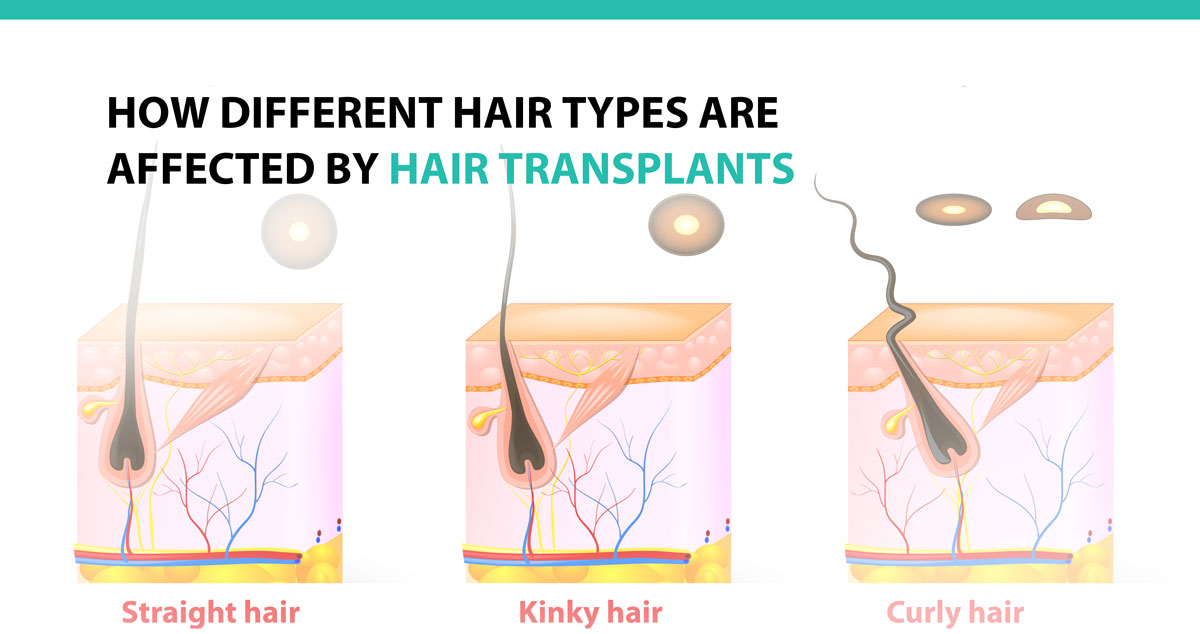
Are you interested in hair restoration surgery to treat male pattern baldness? During your research, you must have seen various before and after photos or videos of past procedures. If you haven’t seen your hair type among them, you’re probably wondering whether you’ll achieve the same natural-looking results. Dr. Joseph Williams, our lead surgeon at the Advanced Medical Hair Institute, has extensive experience with all types of hair.
What Are the Different Types of Male Hair?
Although there are several ways of classifying hair, the Andre Walker system is the most popular. It lists four main hair types:
- Type 1: Straight hair
This sort of hair doesn’t have any visible curls. It appears naturally shiny because the high amount of oil it secretes flows smoothly from the scalp along the strands. Straight hair has sub-categories 1A with the thinnest strands, 1B with medium width, and 1C as the thickest.
- Type 2: Wavy hair
Although wavy hair has a noticeable curl pattern, we don’t describe it as curly. Some hair grooming professionals like it because it has the right volume and isn’t as hard to maintain as curly hair. It also has 2A, 2B, and 2C sub-categories which range from the thinnest to the thickest strands.
- Type 3: Curly hair
This type of hair has more pronounced curls. Other than being thick, it’s also susceptible to damage. Although Andre Walker gave it 3A and 3B sub-classes, natural hair lovers added 3C for the densest type.
- Type 4: Coily hair
Coily hair is sometimes referred to by the slightly controversial term “kinky.” It’s most common in patients of African descent. In addition to being dense, it has the curliest pattern. This feature makes it hard for natural oils to flow across the hair from the scalp. It’s, therefore, prone to dryness and damage because it has fewer protective cuticle layers. As with curly hair, Walker originally had 4A and 4B sub-classes, although 4C was a later addition.
How Hair Transplants Affect Various Hair Types
While there are various hair restoration solutions, there are only two viable hair transplant options. Follicular Unit Transplantation (FUT) removes a strip of scalp tissue with hair follicles and places them on the transplant area. Follicular Unit Extraction (FUE) picks individual hair follicles and transplants them one by one.
Even though both offer certain benefits, Dr. Williams might recommend each depending on your hair type. FUT takes a shorter time and generally produces better results for curly-haired patients than FUE. Harvesting individual hair follicles tends to be a more time-consuming process. However, other factors also determine the chances of success with FUE. They include donor area size and scalp laxity.
FUE is generally preferable for patients with straight hair. That’s because their thin and short hair follicles also have a surrounding of soft connective tissue. Although it takes longer to complete, the main advantage of this surgery is its minimally invasive nature. It, therefore, results in the least pain and scarring.
Some ethnicities, such as Asians and Africans, are more prone to keloid formation. Dr. Williams takes all these factors into account before deciding on the appropriate hair transplant method. That’s why he conducts a thorough exam and asks as many relevant questions as possible about your hair and general health. Two patients with the same hair type might have different hair transplant procedures depending on test results.
Advanced Medical Hair Institute is Your Las Vegas Hair Restoration Expert
The Advanced Medical Hair Institute has been a leader in the field of hair restoration for decades. Given his extensive skills and years of experience, Dr. Joseph Williams guarantees natural results for various hair types. Our continuous training and investment in the latest technology enable us to offer the highest quality procedures. Please make an appointment today for comprehensive solutions to your hair problems.










